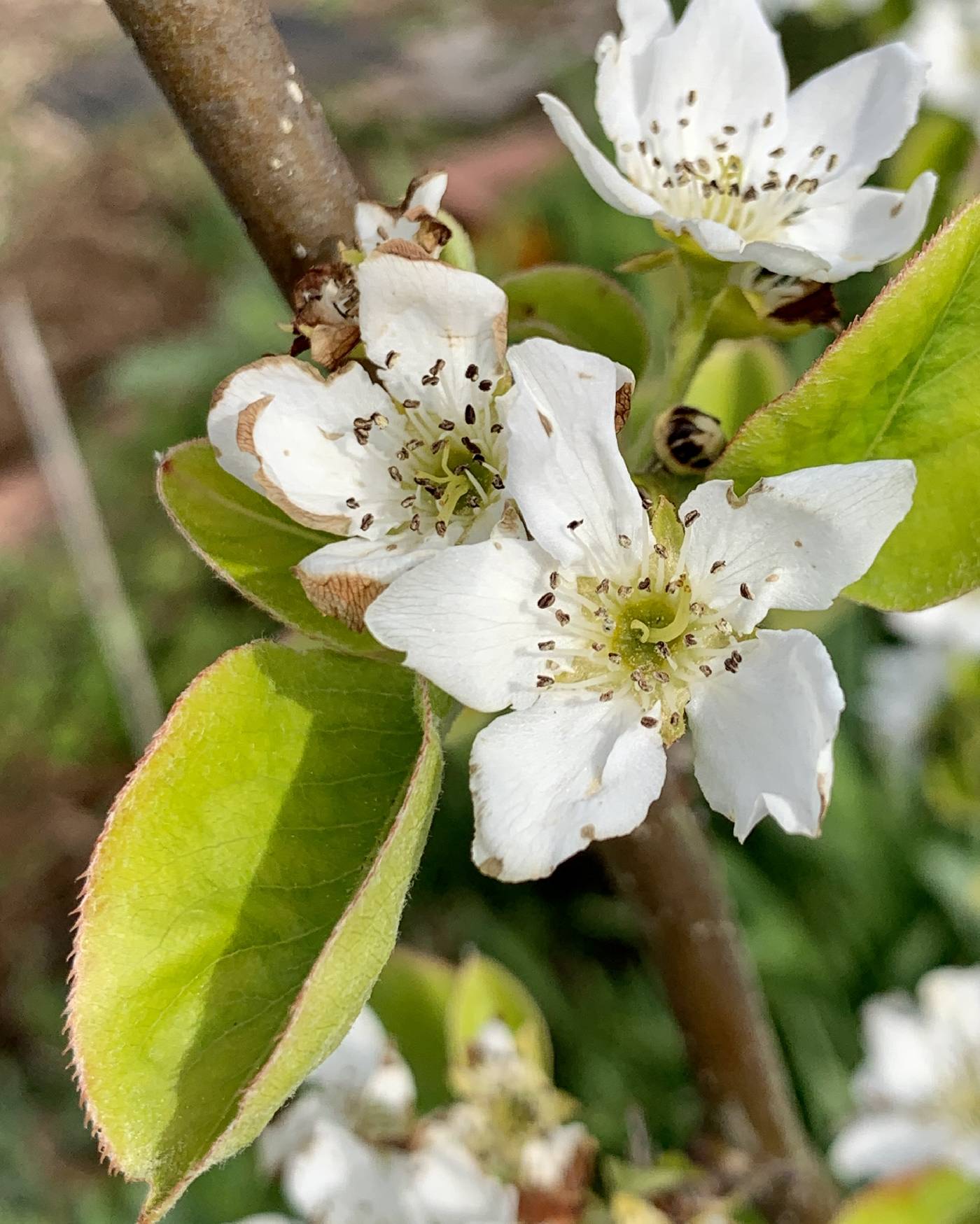Pyrus
|
Family: Rosaceae |
Small tree, rarely a shrub Leaves: alternate, stalked, with small stipules falling early, toothed or non-toothed, rarely lobed, margins rolled toward upper surface of midrib when in bud, usually hairless and glossy, becoming stiff when mature. Flowers: usually bisexual, white to pinkish, borne in clusters, with 20 to 30 stamens, usually red anthers, a single pistil, two to five styles, an inferior ovary that is constricted at the base, and two to five two-ovuled chambers. Sepals: five, fused into an urn-shaped tube with reflexed or spreading lobes. Petals: five, nearly circular to inversely egg-shaped, clawed. Fruit: fleshy with a core (pome), usually pear-shaped (pyriform), containing black to nearly black seeds. Twigs: sometimes thorny. Buds: pointed, hairless or nearly so, with overlapping scales. Flowering: spring, before or with the leaves Habitat and ecology: Old fields, pastures, waste ground, and railroad right-of-ways. Pyrus species sometimes escape from cultivation into natural areas. Occurence in the Chicago region: non-native Notes: Pyrus is a taxonomically confusing genus which sometimes includes Malus, and occasionally includes Sorbus and Aronia. Etymology: Pyrus is the Latin name for pear. Author: The Morton Arboretum Hypanthium globose to obovoid; sep 5, ascending to spreading or recurved; pet 5, pink to white, elliptic to obovate, short-clawed; stamens 15-50, shorter than the pet; ovary inferior, 3-5-locular, the styles separate or connate below; fr a fleshy pome, each locule normally with 2 seeds; trees or shrubs, sometimes thorny, with simple, alternate, toothed or lobed lvs and large fls in the spring in simple umbels or umbel-like clusters on dwarf lateral branches (fr-spurs); x=17. Our native spp. hybridize with each other and with P. malus, and many specimens are hard to identify. Many cult. crab-apples are of hybrid origin. 60, N. Temp. Gleason, Henry A. & Cronquist, Arthur J. 1991. Manual of vascular plants of northeastern United States and adjacent Canada. lxxv + 910 pp. ©The New York Botanical Garden. All rights reserved. Used by permission. |

